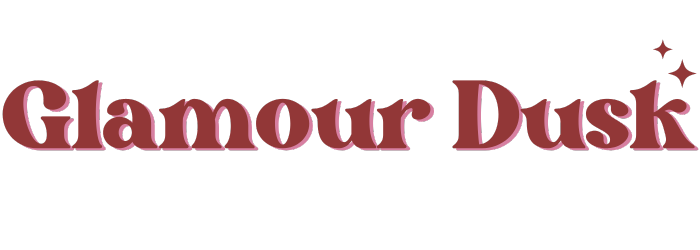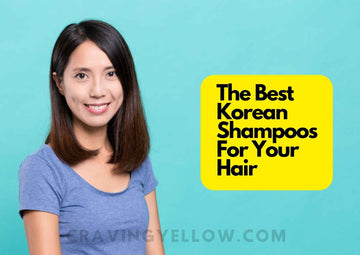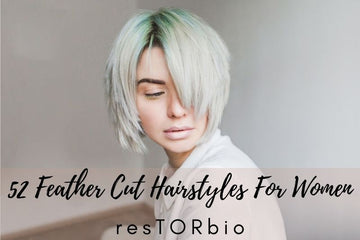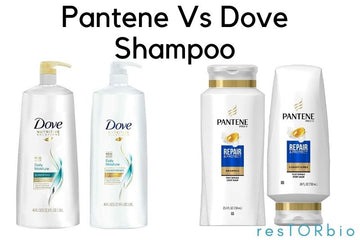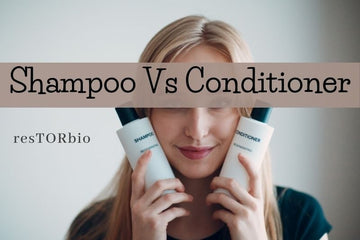
Shampooing and conditioning are essential steps in hair care, but which is better for your hair- shampoo vs conditioner? The answer to this question is not so simple.
To determine which one is more important, you must understand the difference between shampooing and conditioning. They are both used to clean hair, but they serve different purposes.
While shampoo is excellent for removing dirt and oils from your hair, conditioner is essential for adding moisture and shine. In the end, it is up to you to decide which product works best for your hair type.


 Shampoo
Shampoo
 Because it does not adequately clean the scalp of dirt and product buildup (especially silicones), co-washing can leave hair with many products.
You should only wash your hair with conditioner. Avoid silicone products that make your hair feel heavy, dry, and lifeless.
Avoid products that contain ingredients such as dimethicone and Cyclomethicone. These are the most common silicones. To clear buildup from conditioners containing these ingredients, clarifying shampoos may be required every two weeks.
You can also try a condition-shampoo-condition regimen if you have very coarse or curly hair, as coarse hair tends to lose moisture very quickly.
Because it does not adequately clean the scalp of dirt and product buildup (especially silicones), co-washing can leave hair with many products.
You should only wash your hair with conditioner. Avoid silicone products that make your hair feel heavy, dry, and lifeless.
Avoid products that contain ingredients such as dimethicone and Cyclomethicone. These are the most common silicones. To clear buildup from conditioners containing these ingredients, clarifying shampoos may be required every two weeks.
You can also try a condition-shampoo-condition regimen if you have very coarse or curly hair, as coarse hair tends to lose moisture very quickly.

Shampoo vs Conditioner: What are They?
Shampoo
The shampoo is technically a liquid shampoo for hair and scalp. Shampoo removes oil buildup on your scalp and cleans out dead and damaged skin cells. The shampoo is derived from the Hindi word Champo, which means to massage your scalp. Women used to use soap to wash their hair in the past. However, traditional soaps didn't have enough lathering ability and were difficult to rinse out. Modern shampoos were developed for hair care in the 1930s.
Conditioner
Conditioners can also be available in liquid form. This conditioner is used after a hair wash and can complete your regular hair care routine. Conditioners can also be used as conditioners. They are additives that affect your hair's look, texture, and manageability. Shampoos can remove sebum oil and dirt from your hair. To condition your hair, you will need to use sebum. This is why conditioners were created.How Shampoo & Conditioner Can Help Your Hair?
Shampoo
Sebum oil is produced by your scalp and protects hair follicles. Sebum oil builds up in hair follicles when it is made more. Your hair health will look incredibly dull and greasy because of this. Sebum oil attracts dirt, dust, and other harmful bacteria easily. Your scalp becomes dirty and is exposed to many pathogens. You cannot remove sebum oil from hair with just water. The products can be used to remove excess sebum oil. They contain harmful chemicals that can strip your hair of its natural oils and dry it out. It would help if you chose the shampoo that best suits your hair. There will be shampoos that are gender-specific as well as products for children. Modern shampoos can be used to treat different hair types. Those that are specialized in dealing with dandruff will be recommended.
Conditioner
Conditioners for hair have cationic surfactants, which provide a positive electrical charge. The conditioner attracts the harmful electric bill from your hair. This allows the conditioner to penetrate your hair follicles. The positive charge from the conditioners and negatively charged hair reduce static electricity. Conditioners can also flatten the cuticle scales on your hair shaft. It decreases friction between hair fibers and increases light reflectance. Conditioners can also prevent split ends. Your hair will look shiny, smooth, and glowing.Shampoo vs Conditioner: Ingredients and Use
Shampoo
In general, shampoos contain 10 to 30 ingredients. They can contain cleansing agents, thickeners, preservatives, and other natural ingredients. Different shampoos are available to suit different uses. These are: 1. Everyday shampoo: They are gentle and won't dry your hair even after repeated use. If you prefer to clean your hair every day, this is the best option. 2. Volumizing shampoo Volumizing shampoo is the best option for thin hair. 3. Sulfate-free shampoo Sulfates can be used in shampoos to cleanse the scalp. However, they also strip your hair of its oils, making it very dry. You may prefer a sulfate-free product if you already have dry hair. 4. Shampoo for oily hair: It is ideal for oily hair as it removes excess sebum oil from your scalp. 5. Dry shampoo Dry shampoo is best if you don't have the time to wash your hair and still want it as clean as washed. Dry shampoos are hair sprays that clean and give your hair a pleasant fragrance. 6. Shampoos that protect the color of your skin A color protection shampoo is a good choice if you've recently had your hair dyed and don't want it to affect your hair health. It protects your hair from becoming dry and dull. Common Ingredients Include: 1. Surfactants: Surfactant is a cleansing agent that removes dirt and other pollutants from the hair follicles and scalp. These are the main ingredients in shampoos:- Sodium lauryl sulfate (SLS)
- Sodium lauryl sarcosinate
- Sodium laureth sulfate (SLES)
- Preservatives are used to stop bacteria from affecting hair health. These include:
- Sorbic acid
- Sodium benzoate
- Methylisothiazolinone
- Tetrasodium EDTA
- Benzyl alcohol
- Dehydroacetic acid
- Potassium sorbate
- Stearyl alcohol
- Xanthan gum
- Gelatin
- Carnauba wax
- Stearic acid
- Cetyl alcohol
- Jojoba oil/Argan Oil
- Olive
- Green tea
- Chamomile
- Aloe Vera
- Coconut oil
- Honey
- Essential oils
- Fruit extract
- Root extract
Conditioner
There are five types of conditioners on the market:- Deep conditioner.
- Moisturizing conditioner
- Acidifying conditioner
- color-protecting conditioner
- and ones that provide thermal protection.
- Glycerol
- Surfactants containing cationic substances
- Propylene glycol
- Sodium PCA
- Erythritol
- Hyaluronic acid
- Fat alcohols
- Panthenol
- Sorbitol
- Fructose
- Polyquaternium polymers
- Proteins
- Amino acids
- Oils for plants
- Mineral oil
- Fatty acids
- Silicones
- Stearalkonium chloride
- Behentrimonium chloride
- Citric acid
- Amine oxides
- Ascorbates
- Cetrimonium chloride
- Citrus extracts
- Ethylhexyl methoxycinnamate
- Salicylates
- PABA
- Benzophenone
- Polymers
- Cyclomethicone
- Amodimethicone
- Dimethicone
- Dimethiconol
How To Use Shampoo & Conditioner
It is recommended to shampoo your hair before applying conditioner. These steps will ensure the best results.- Use warm water, not hot water, to thoroughly saturate your hair.
- Please take a little bit of shampoo and rub it into your palm.
- Massage it onto your scalp until it foams.
- Apply the shampoo to your hair. Pay attention to your scalp.
- Rinse your hair thoroughly.
- Please take a little conditioner and place it in your palm.
- It should be massaged into your hair along the length, keeping the scalp out.
- Allow the conditioner to run for 3 minutes.
- Rinse your hair thoroughly.
- To remove any moisture, gently rub a towel onto your hair after showering.
Difference Between Shampoo and Conditioner
The best shampoos and conditioners are different in that they contain cleansing agents (detergents or surfactants), while shampoos don't. Conditioners don't contain any cleansing agents. However, mild shampoos can include conditioning agents similar to those found in conditioners. These could be natural oils, silicones, or proteins. Shampoo
Shampoo
- It is a liquid used to clean your hair and hair follicles.
- It removes dirt, dust, and bacteria from your scalp. The product also removes dead skin cells and excess sebum oil.
- Shampoos contain cleansing ingredients such as sodium lauryl sulfate, sodium lauryl sarcosinate, and sodium laureth sulfate.
- Conditioner is a thick cream substance that you apply to your hair shaft after washing it.
- Conditioner moisturizes and nourishes hair. Conditioner makes hair soft and healthy.
- On the other side, Conditioners contain moisturizing and hydrating components like propylene glycol and sodium PCA.
Use Conditioner Before Shampoo
There is no evidence to support the safety or effectiveness of reverse hair and co-washing and the frequency they should be used. Conditioner before shampoo may be beneficial if your hair feels dry, greasy, or weighed down after conditioning. This is also known as pre-wash conditioning or reverse hair washing. If you think it might work for you, giving either of these methods a shot doesn't hurt. Reverse hair washing doesn't require you to rinse the conditioner out before shampooing. You:- Apply conditioner and allow it to sit for a while.
- Apply shampoo to your hair, and then rinse out the conditioner.
- Rinse shampoo and conditioner together.
- Acts as a primer for washing
- Allows for even distribution of the shampoo
- Protects hair strands, so the shampoo doesn't strip hair of its natural oils.
Who Should Condition Their Hair Before Shampooing?
For people who have hair, that is:- Dry
- Damage
- Fine
- Dehydrated hair
- Chemically treated hair is more prone to breaking,
- People with curly or textured hair
 Because it does not adequately clean the scalp of dirt and product buildup (especially silicones), co-washing can leave hair with many products.
You should only wash your hair with conditioner. Avoid silicone products that make your hair feel heavy, dry, and lifeless.
Avoid products that contain ingredients such as dimethicone and Cyclomethicone. These are the most common silicones. To clear buildup from conditioners containing these ingredients, clarifying shampoos may be required every two weeks.
You can also try a condition-shampoo-condition regimen if you have very coarse or curly hair, as coarse hair tends to lose moisture very quickly.
Because it does not adequately clean the scalp of dirt and product buildup (especially silicones), co-washing can leave hair with many products.
You should only wash your hair with conditioner. Avoid silicone products that make your hair feel heavy, dry, and lifeless.
Avoid products that contain ingredients such as dimethicone and Cyclomethicone. These are the most common silicones. To clear buildup from conditioners containing these ingredients, clarifying shampoos may be required every two weeks.
You can also try a condition-shampoo-condition regimen if you have very coarse or curly hair, as coarse hair tends to lose moisture very quickly.
Frequently Asked Questions about Shampoo Vs Conditioner
Do You Need A Conditioner Before Shampoo?
Reverse hair washing is not a popular method. This means that conditioners are used before shampoo. These methods are not supported by scientific evidence. If you are still considering using which first, read our article: Do You Use Shampoo Or Conditioner First?Can You Use A Conditioner Without Shampoo?
The co-washing method is when you use conditioner after you have applied it. This is a way to skip the shampoo.
